How to Keep Your Remote Agents Engaged
In 2020 BP (Before Pandemic), contact centre agents typically spent their days navigating between upset customers and harried supervisors. Stress...

Provide training, coaching, and other development tasks at the right moments.

Keep labor costs in check and ensure rapid staff adjustments to meet demand.
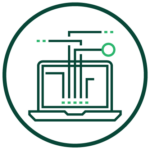
Keep agents on schedule, reduce manual entry, and save WFM manager time.

Monitor agent-state data and alert agents when pre-set thresholds are exceeded.

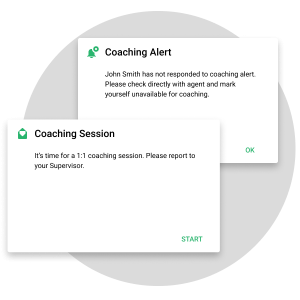
Workforce Automation aggregates idle time across the agent population and delivers training directly to agents’ desktops when service level demands can accommodate it. Schedules are updated automatically, eliminating wasteful data entry time.
Workforce Automation automatically prompts coaching sessions during idle time, streamlining centre workflows and ensuring agents the personal attention they need to better serve customers.
Leverage real time automation to find appropriate moments during the shift to deliver work updates, system incident communications, or off-phone tasks to your agents.
With better insight into actual centre conditions, you’ll be able to offer agents surprise breaks, birthday wishes, or other personalised messages.
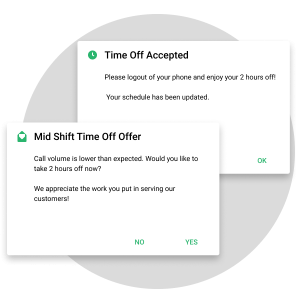
Workforce Automation monitors call volume and schedule data to ensure your centre is always appropriately staffed. It uses real-time net staffing data to reduce overstaffing costs and helps you match agent supply with customer demand, calling in all hands on deck as needed.
When an agent fails to show up for a shift on time, Workforce Automation notifies the supervisor and updates the schedule automatically, eliminating the need for manually updating the schedule.
Fluctuating volume dictates the need for intraday staffing adjustments. Workforce Automation removes the burden from WFM managers by monitoring volume and automatically proposing VTO and VOT options for agents.
Workforce Automation monitors and reacts to volume fluctuations in real time, balancing resources across call, web, chat and other channels to maintains service levels.
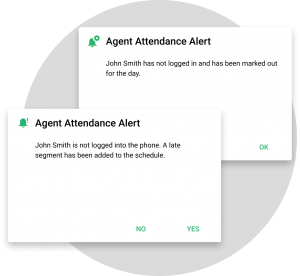
Workforce Automation uses real time automation to proactively prompt agents into their lunch, break, or end-of-shift before a long call creates an adherence issue.
If agents are not in the appropriate state and ready to take inquiries, service levels and customers are negatively impacted. Workforce Automation prompts agents to return to the appropriate state and notifies supervisors for immediate intervention.
A manual approach to managing multiple agents constantly moving between AUX states leaves managers with little time for other tasks. Workforce Automation addresses outlier behavior immediately with automatically triggered alerts to help keep adherence under control.
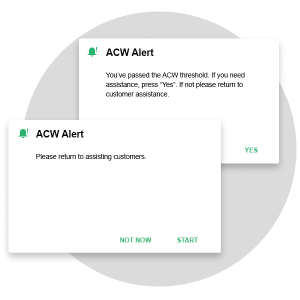
When agents go beyond established thresholds for sufficient ACW time, Workforce Automation prompts with an offer to help or a reminder to return to helping customers.
A customer on hold is not a happy customer. Workforce Automation monitors caller hold time and prompts agents—in terms you define—if they need help.
Workforce Automation monitors agent call-handling states (talk time, hold time, ACW) for individual calls, days, or weeks and aggregates the data to identify patterns that coaches can use to address and take real-time action on outlier performance behavior.
 How to Keep Your Remote Agents Engaged - In 2020 BP (Before Pandemic), contact centre agents typically spent their days navigating between upset customers and harried supervisors. Stress was often high but the supporting structures of office and colleagues in proximity usually made it manageable. Then the pandemic sent agents home to work, cutting off those vital support structures. The good news is…
How to Keep Your Remote Agents Engaged - In 2020 BP (Before Pandemic), contact centre agents typically spent their days navigating between upset customers and harried supervisors. Stress was often high but the supporting structures of office and colleagues in proximity usually made it manageable. Then the pandemic sent agents home to work, cutting off those vital support structures. The good news is… In 2020 BP (Before Pandemic), contact centre agents typically spent their days navigating between upset customers and harried supervisors. Stress...
Power and flexibility to modernise your contact centre and create a lasting impact for your business.